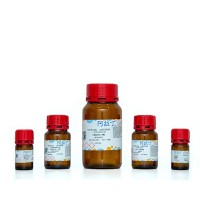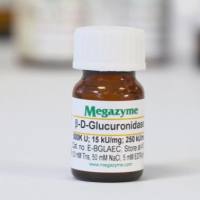Histochemical assays for plant sections
互联网
(copied from the Plant Anatomy course pages at University of Illinois at Urbana-Champaign)
1. LIGNIN - Phloroglucinol test: Place on the section a large drop of a saturated aqueous solution of phloroglucinol in 18% HC1. Cover with a cover slip. Lignin will appear red-violet. The preparation is not permanent.
Toluidine Blue O: Place a drop of 0.05% aqueous toluidine blue O on the specimen. Stain for 2-4 minutes, then replace the stain with water. Polyphenols, such as lignin and tannins, will stain green to blue-green. Pectin and pectic substances will stain pink to purple.
2. STARCH - IKI reaction: Mount the sections in IKI solution. To make this solution, dissolve 2g of KI in 100 ml of water and then dissolve 0.2g of iodine in the KI solution. Starch will appear blue to black in a few minutes. Newly formed starch may appear red to purple.
3. CALLOSE - Aniline Blue method: Place the fresh tissue in a 0.005% solution of aniline blue in 50% alcohol for 4-24 hours. Rinse the sections in water and mount. Callose should stain blue. Resorcin blue (lacmoid), or cotton blue may be used in place of aniline blue.
4. CELLULOSE - IKI/H2SO4 method: Place the fresh sections in IKI solution (see #1 above) for 15 minutes or longer. Mount the section in IKI under a cover slip, add a drop of 65% H2SO4 at the side of the cover slip, and allow it to diffuse under the cover slip. Walls containing cellulose will turn dark blue; lignin will stain orange to yellow. As the H2SO4 reacts on the wall, the wall will swell, with the result that even in lignified walls, the cellulose may be seen. In the middle lamella, where the cellulose and lignin are in very close relation, a green color may be evident. After a relatively short time the H2SO4 will dissolve the cellulose, and the tissue will fall to pieces. The method works well on wood.
Methylene Blue: Place a drop of 0.1% aqueous methylene blue on the specimen. Stain for 15-20 minutes, then replace the stain with water. Cellulose will stain blue - the darker the blue, the purer the cellulose.
5. PECTIC SUBSTANCES - Ruthenium red method: Place the sections in aqueous ruthenium red (0.05%) until the walls are red. Mount in water. Pectic substances will appear pink to red.
Toluidine Blue O: Place a drop of 0.05% aqueous toluidine blue O on the specimen. Stain for 2-4 minutes, then replace the stain with water. Polyphenols, such as lignin and tannins, will stain green to blue-green. Pectin and pectic substances will stain pink to purple.
6. TANNINS - Ferric Sulfate reaction: Place sections in a 0.5-1.0% solution of ferric sulfate or ferric chloride in 0.1 N HC1. A blue precipitate indicates the presence of tannins.
Toluidine Blue O: Place a drop of 0.05% aqueous toluidine blue O on the specimen. Stain for 2-4 minutes, then replace the stain with water. Polyphenols, such as lignin and tannins, will stain green to blue-green. Pectin and pectic substances will stain pink to purple.
7. PERMANENT STAINS - Safranin Red which stains cutin, chromatin, lignin, phenolics, tannins, and chloroplasts red; and Fast Green which stains cellulose green.








